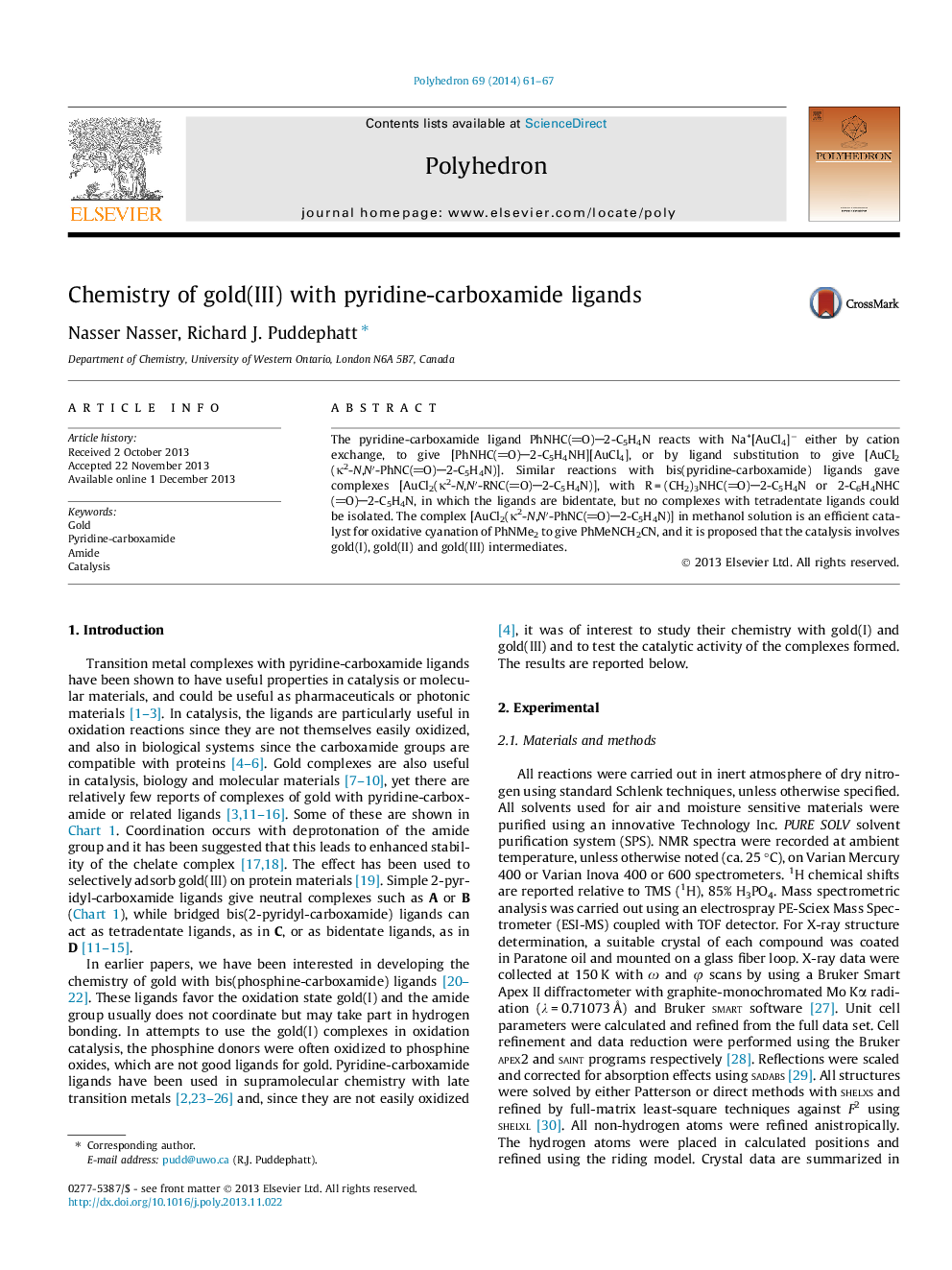| Article ID | Journal | Published Year | Pages | File Type |
|---|---|---|---|---|
| 1338061 | Polyhedron | 2014 | 7 Pages |
The pyridine-carboxamide ligand PhNHC(O)2-C5H4N reacts with Na+[AuCl4]− either by cation exchange, to give [PhNHC(O)2-C5H4NH][AuCl4], or by ligand substitution to give [AuCl2(κ2-N,N′-PhNC(O)2-C5H4N)]. Similar reactions with bis(pyridine-carboxamide) ligands gave complexes [AuCl2(κ2-N,N′-RNC(O)2-C5H4N)], with R = (CH2)3NHC(O)2-C5H4N or 2-C6H4NHC(O)2-C5H4N, in which the ligands are bidentate, but no complexes with tetradentate ligands could be isolated. The complex [AuCl2(κ2-N,N′-PhNC(O)2-C5H4N)] in methanol solution is an efficient catalyst for oxidative cyanation of PhNMe2 to give PhMeNCH2CN, and it is proposed that the catalysis involves gold(I), gold(II) and gold(III) intermediates.
Graphical abstractA gold(III) complex with pyridine-carboxamide ligand is an active catalyst for oxidative cyanation of N,N-dimethylaniline.Figure optionsDownload full-size imageDownload as PowerPoint slide
